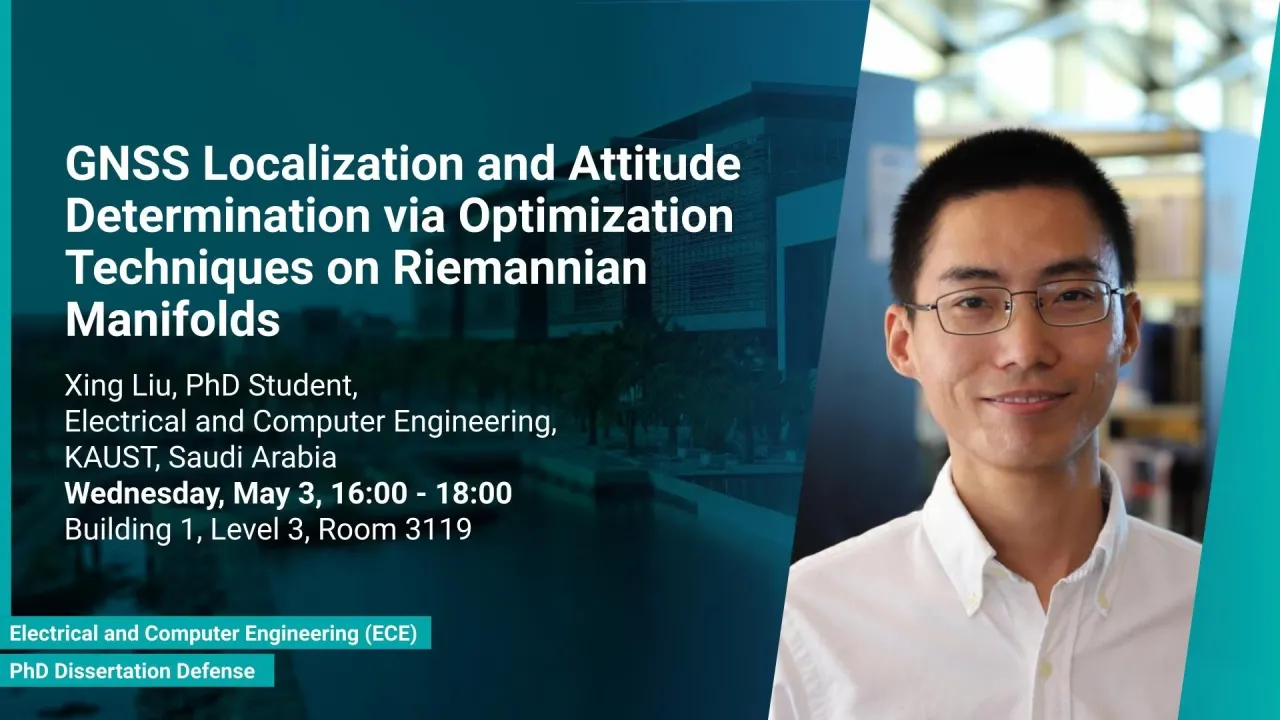
GNSS Localization and Attitude Determination via Optimization Techniques on Riemannian Manifolds
This thesis focuses on Global Navigation Satellite Systems (GNSS)-based localization and attitude determination, essential for navigation and control systems in various platforms. Carrier-phase observations from GNSS signals are more accurate than pseudo-range, but resolving integer ambiguities in carrier-phase data is challenging. The thesis proposes three attitude determination methods based on an optimized GNSS attitude model with nonlinear constraints. Additionally, a joint solution for real-time kinematic positioning and attitude determination is proposed, leveraging the correlation between GNSS data in these two problems. Riemannian optimization is applied to improve the accuracy and ambiguity resolution in both localization and attitude determination.
Overview
Abstract
Global Navigation Satellite Systems (GNSS)-based localization and attitude determination are essential for many navigation and control systems widely used in aircrafts, spacecrafts, vessels, automobiles, and other dynamic platforms. A GNSS receiver can generate pseudo-range and carrier-phase observations based on the signals transmitted from the navigation satellites. Since the accuracy of the carrier phase is two orders of magnitude higher than that of the pseudo-range, it is crucial to employ the precise GNSS data, the carrier phase, to perform a high-accuracy position or/and attitude estimate. The main challenge to fully utilizing carrier-phase observations is to successfully resolve the unknown integer parts (number of whole cycles), a process usually referred to as integer ambiguity resolution. Many methods have been developed to resolve integer ambiguities with different performance offerings. Under challenging environments with insufficient tracked satellites, significant multipath interference, and severe atmospheric effects, the existing methods might not be up to par regarding reliability and efficiency.
First, we study the GNSS attitude determination problem in this thesis. A GNSS attitude model with nonlinear constraints about antenna-array geometry is used to incorporate a priori information rigorously. Given the characteristics of the employed nonlinear constraints, we formulate GNSS attitude determination as an optimization problem on a manifold. We propose three different attitude determination methods: the array-aided attitude determination based on an oriented sphere manifold, the Riemannian-manifold-based orthonormality-constrained attitude determination (RieMOCAD), and the constrained wrapped least squares (C-WLS) method.
Finally, we propose a joint solution for real-time kinematic positioning and attitude determination. Although without common parameters in the localization and attitude determination problems, the GNSS data of the two issues are correlated. We consider this correlation and treat GNSS localization and attitude determination as a joint problem instead of two independent issues, allowing us to leverage the prior information rigorously. Again, Riemannian optimization is applied to improve the performance of RTK positioning and attitude determination regarding the accuracy and ambiguity resolution.
Brief Biography
Xing Liu is a Ph.D. candidate in Electrical and Computer Engineering in the Information Science Lab under the supervision of Prof. Tareq Y. Al-Naffouri. Before joining KAUST, he received the B.S. degree in electronic and information engineering from the China University of Petroleum and the M.S. degree in signal and information processing from the University of Chinese Academy of Sciences. His research focuses on high-accuracy positioning and attitude determination based on global navigation satellite systems.

